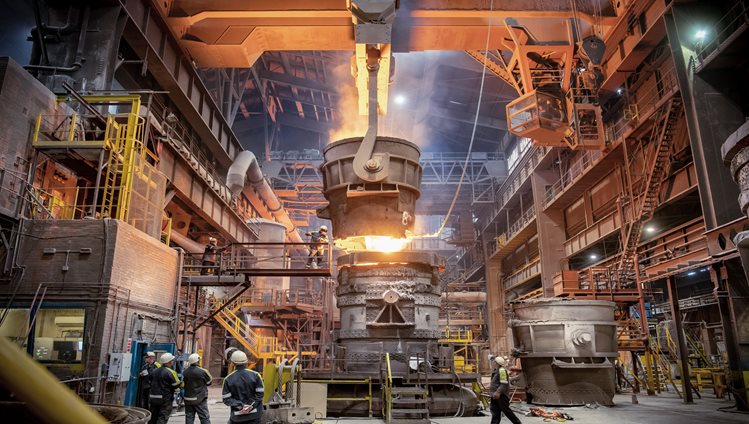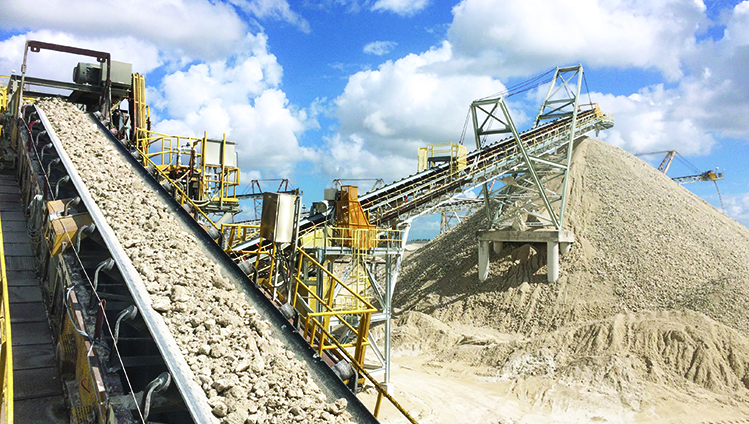Sustainable production, current challenges, future customer needs: Julia Niescken, Director Sales for EMEA (Europe, Middle East and Africa), provides insights into current and future topics of the metal processing industry.

Question 1
Green steel is set to play an increasingly important role in the future. Is there already increased demand for it today?
|

|
Yes, absolutely. Everyone is talking about green steel. The automotive industry is now increasingly demanding that sustainably produced sheet steel should be used. Operators within the steel industry are therefore very interested in sustainable solutions. The suppliers’ sustainability goals are often inquired about and, in some cases, adapted products requested.
|
|
Question 2
How do steel operators have to redesign their mills on their way to making green steel production possible?
|

|
The way to green steel is paved with fundamental changes and huge investments. We can see this in the example of ArcelorMittal. As announced in July 2021, the global steel manufacturer plans to transform its Spanish plant in Sestao into the world’s first full-scale zero carbon-emissions steel plant. This includes changing the metallic input by increasing the proportion of circular, recycled scrap, and using green hydrogen-produced direct reduced iron (DRI) from another site in Gijón in its two existing electric arc furnaces (EAF). The manufacturer also has to power all steelmaking assets, such as its rolling mill or finishing lines, with renewable electricity. Apart from the €1 billion investments provided by the Spanish Government for the DRI and EAF installations in Gijón, ArcelorMittal is going to invest €50 million in Sestao.
|
|
Question 3
What does this mean for their conveyor systems? How will the requirements change in the future?
|

|
In order to produce green steel, process temperatures in which our belts have to operate become higher. In the new environment, completely vulcanized sidewall belts are required for better bonding of the components in order to ensure performance under changing conditions.
|
|
Question 4
What additional challenges was the steel industry faced with due to the Covid-19 pandemic?
|

|
2020 and 2021 posed many challenges to the steel industry. Lockdowns and an increasing home-office culture in the entire EMEA region led to lower demand for new office buildings and the construction industry suffered. Moreover, the automotive industry demands less steel after the production of vehicles has declined in recent years for a variety of reasons, many of which are related to the pandemic.
|
|
Question 5
Have there been any positive signals from the industry in the meantime?
|

|
Yes. Meanwhile, we have seen a slight recovery of the steel industry driven by domestic appliances and automotive. Steel producers are predicted to further ramp up production. However, considerable problems in the global supply chain experienced since July 2021 are putting the recovery of the steel sector at risk. The Russia-Ukraine war has further exacerbated supply chain disruptions. Skyrocketing energy and carbon prices, as well as persisting inflation, have caused the steel industry to grow at a more moderate pace.
|
|
Question 6
From a sales perspective: Which products will customers be looking for in the future?
|

|
When it comes to conveying solutions, customers will continue to request many different types of belts. These might be standard flat belts made from a heat-resistant or flame-resistant compound or engineered solutions such as elevator or pipe belts. A popular product is our Flexowell® sidewall conveyor belt which is designed for horizontal, steep inclined and vertical handling. The system is capable of running at inclinations from zero to 90 degrees or at any angle in between, and thus helps to decrease material consumption and property ground costs for new production plants. For steel plants connected to iron ore mines, belts with energy saving options could become more and more interesting. With our ECO series, we offer a popular solution for customers looking to improve the efficiency of their operations.
|
|
Question 7
How important is it to offer comprehensive services in this context?
|

|
Services play a key role in the metal processing industry as customers increasingly ask for them. We serve this demand, for example, with Service Materials, Accessories, Components and Tools that we at Continental summarize as SMACT. However, professional maintenance, technical consulting and digital solutions such as monitoring systems are also best-sellers as they extend the lifetime of the belts in use. In the near future, we are convinced that services around sustainable disposal or reuse of the belt will become more and more relevant and we are working on developing appropriate solutions.
|
|
Question 8
How can customers increase productivity?
|

|
With comprehensive services and innovative products. ContiClean, for example, is a product innovation which is made for wet applications and helps increase productivity while reducing operational costs. A good investment is certainly a monitoring system such as the radar and ultrasonic-based LoadSense, which measures the flow of conveyed material as well as material distribution. This helps to prevent overload, spillage and mistracking, and also makes operations more efficient. Services on all mechanical elements around the belt, belt repairs or splicing-and-repair materials can help our customers prevent a breakdown and make production more reliable.
|
|
Back to the overview










